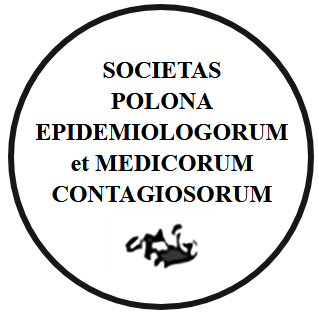RESEARCH PAPER
Campylobacteriosis in Poland in 2020-2022
1
Zakład Epidemiologii Chorób Zakaźnych i Nadzoru, Narodowy Instytut Zdrowia Publicznego PZH
– Państwowy Instytut Badawczy
Submission date: 2025-03-25
Final revision date: 2025-04-10
Acceptance date: 2025-04-16
Online publication date: 2025-04-24
Corresponding author
Zuzanna Nowacka
Zakład Epidemiologii Chorób Zakaźnych i Nadzoru, Narodowy Instytut Zdrowia Publicznego PZH – Państwowy Instytut Badawczy
Zakład Epidemiologii Chorób Zakaźnych i Nadzoru, Narodowy Instytut Zdrowia Publicznego PZH – Państwowy Instytut Badawczy
KEYWORDS
TOPICS
ABSTRACT
Background: Campylobacteriosis, caused mainly by C. jejuni and C. coli, is one of the most common intestinal infections worldwide. In Poland, the disease is monitored and reported to the surveillance system. Symptoms of campylobacteriosis include diarrhoea (sometimes with blood), abdominal pain and fever. The main reservoir is animals, especially poultry, and human infection usually occurs through contaminated food or water. Objective: The aim was to assess the epidemiological situation of campylobacteriosis in Poland in 2020-2022 in comparison to previous years. Material and methods: Epidemiological interview data and outbreak data were used for the analysis. Incidence was calculated using demographic data from the Statistics Poland. Data on deaths due to campylobacteriosis were obtained from the Statistics Poland and EpiBaza. Results: In Poland, 418 cases of campylobacteriosis were reported in 2020, 630 in 2021 and 524 in 2022 (vs. 715 in 2019). The incidence was 1.09/100.000 population in 2020, 1.66-2021 and 1.39-2022. The highest incidence was recorded in the Warminsko-Mazurskie, Zachodniopomorskie and Lubuskie voivodeships. Most cases were detected in the age group: 0-4. Campylobacteriosis was more frequent in males. The most common symptom was diarrhoea, which occurred in 86-92% of cases in each year. In 2020, 76.6% of patients were hospitalised, in 2021-77.9% and in 2022-82.6%. Conclusions: The downward trend in the number and incidence of campylobacteriosis, which started in 2018, continues in 2020-2022. The COVID-19 pandemic had a significant impact on the number of cases only in 2020. The arrival of refugees from Ukraine in 2022 did not affect the number of registered cases of campylobacteriosis in the country. The biggest problem is the lack of routine testing for Campylobacter infection in diarrhoeal cases and the fact that diagnosis is only made in hospitalized patients. More realistic is the situation of this disease in a small number of counties in Poland, especially in Śląskie and Warmińsko-Mazurskie voivodeships.
We process personal data collected when visiting the website. The function of obtaining information about users and their behavior is carried out by voluntarily entered information in forms and saving cookies in end devices. Data, including cookies, are used to provide services, improve the user experience and to analyze the traffic in accordance with the Privacy policy. Data are also collected and processed by Google Analytics tool (more).
You can change cookies settings in your browser. Restricted use of cookies in the browser configuration may affect some functionalities of the website.
You can change cookies settings in your browser. Restricted use of cookies in the browser configuration may affect some functionalities of the website.





